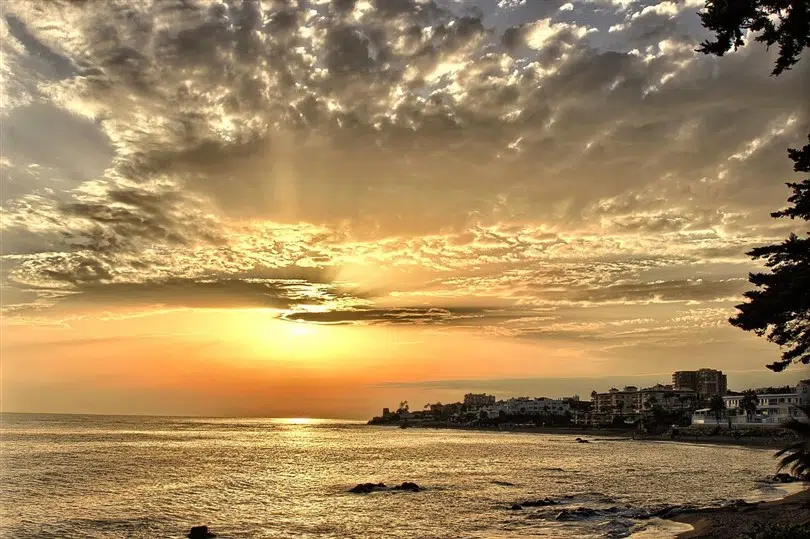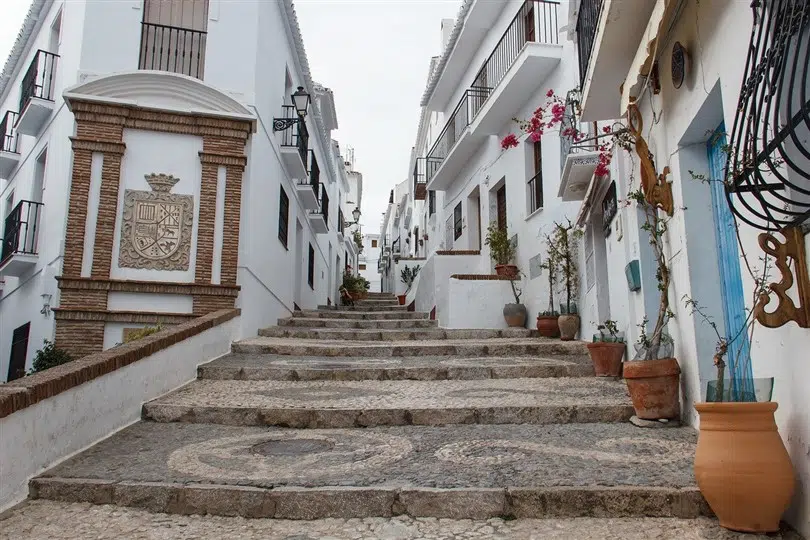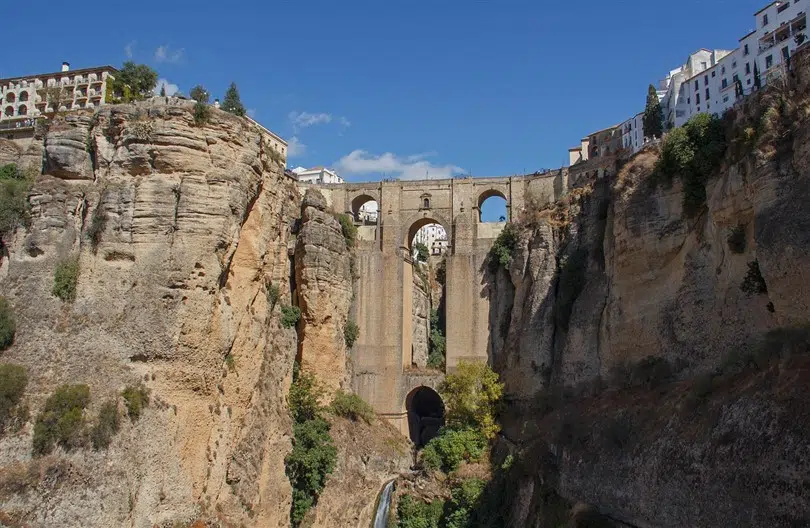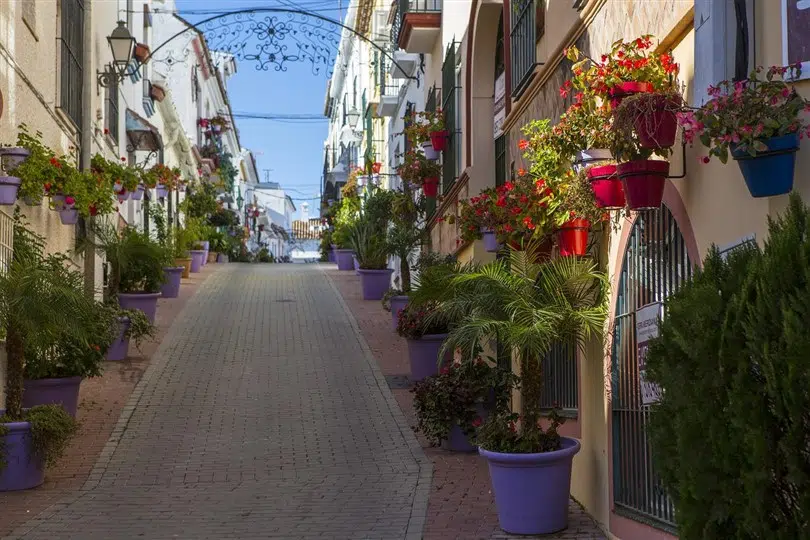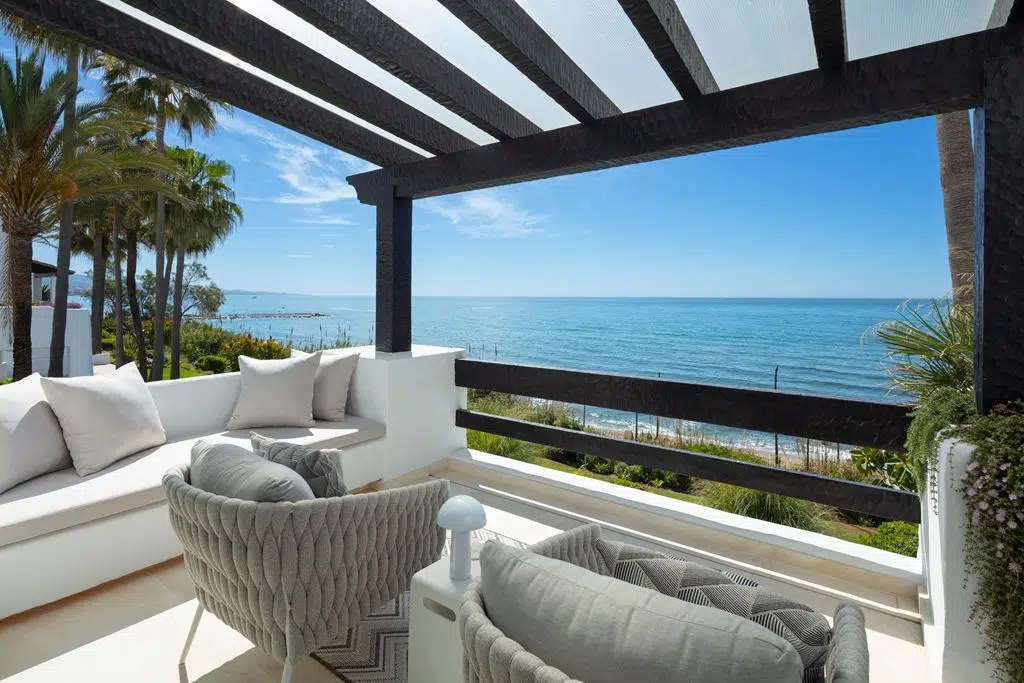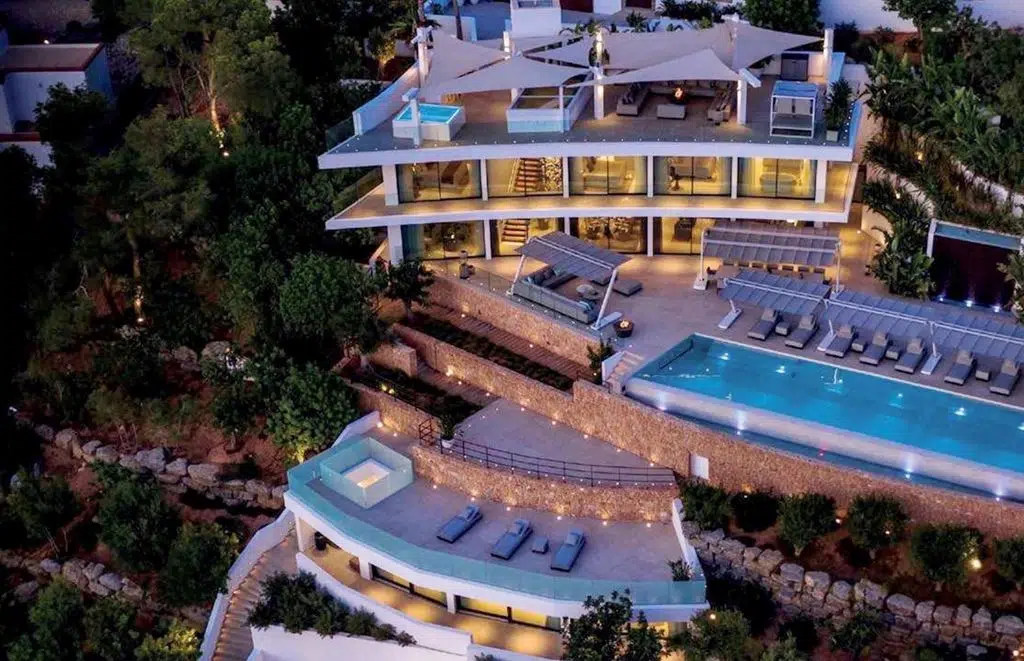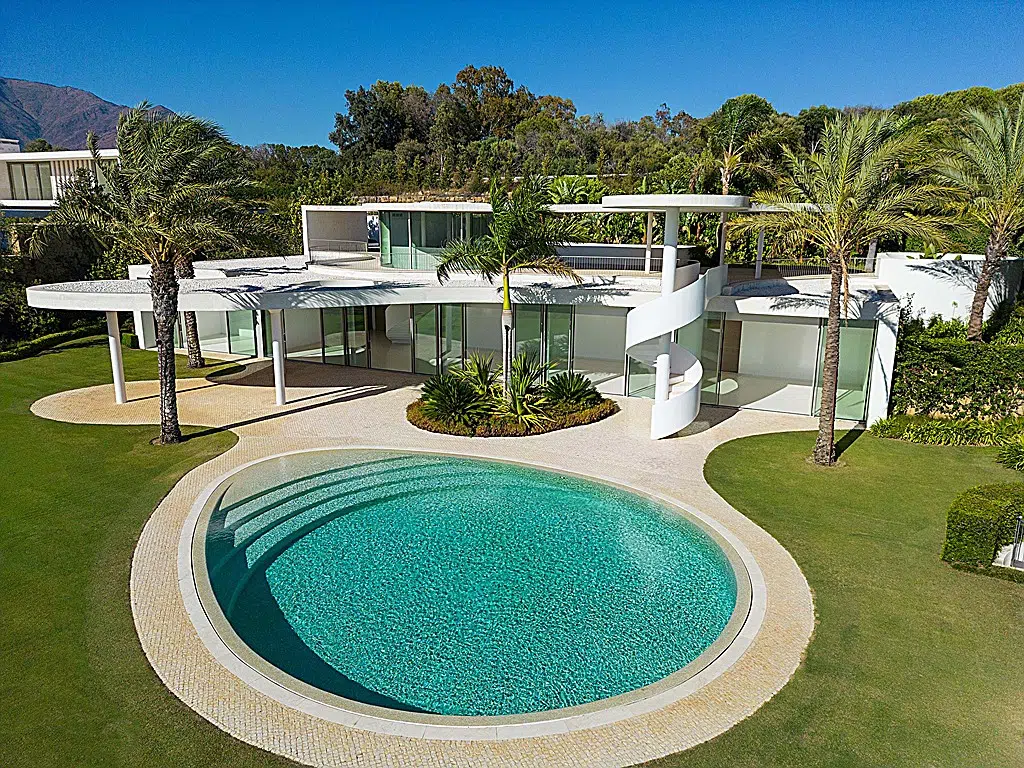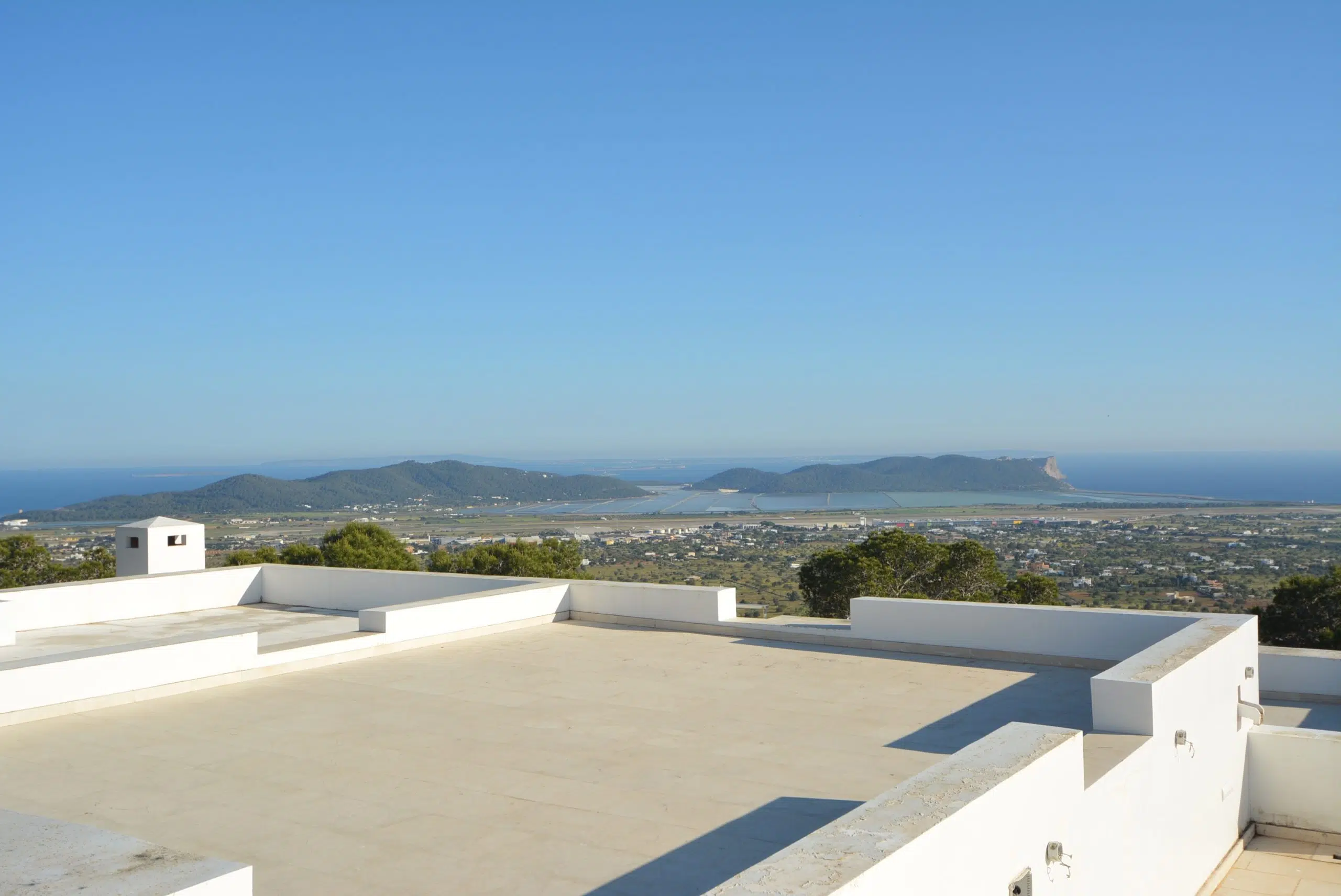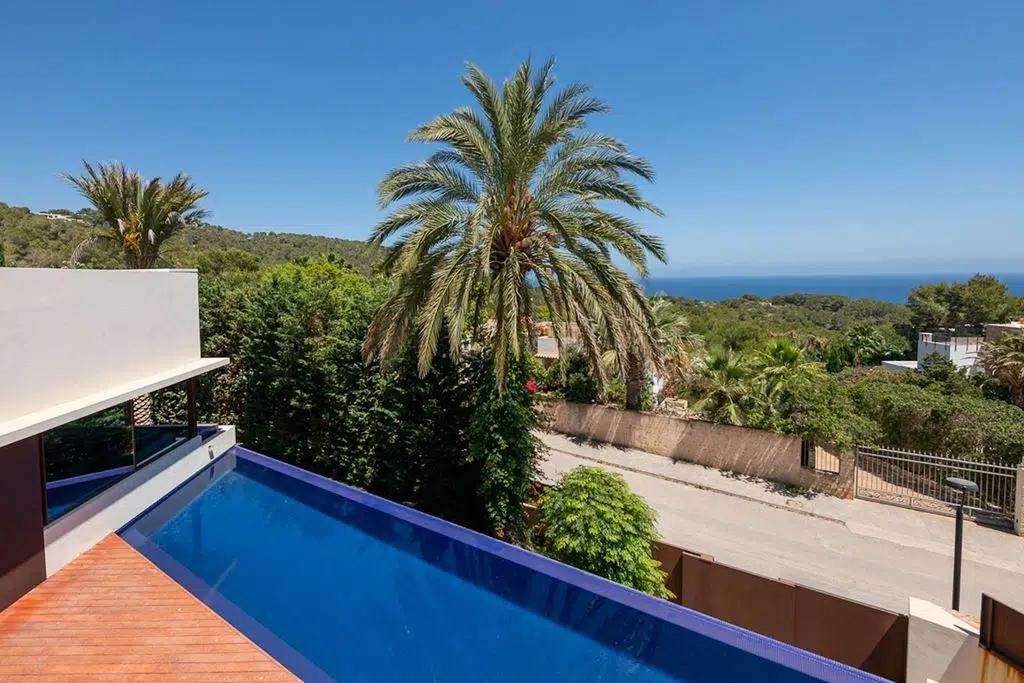The Costa Del Sol area of Spain, neatly covering the southern coast for 100 kilometres, is one of the country’s top destinations for house hunters and holidaymakers. Bordering the Mediterranean and facing Africa’s northern coast, the area stands out in Spain hence why the region is also home to many foreign expats who enjoy living there all year round. The name “Costa del sol ” means the sun’s coast, perfectly portraying the weather and climate, yet the area offers much more. The history, food, culture, and daily lifestyles reflect idyllic Spanish living. Whether you want to just visit, or are searching for property, we have you covered. This guide looks at the most important things to know and which places will suit your lifestyle and expectations.
About the Costa Del Sol Area of Spain
1: Weather and Climate
The Costa Del Sol covers a large area, so temperatures vary slightly depending on where you go. Generally, the more north the location, the temperatures drop. Visitors and house hunters in the Costa Del Sol can expect Mediterranean summers with hot summers and cold winters. In January, expect temperatures to average around 15 degrees and these rise to 35 degrees in August. You have roughly 11 hours of sunshine during summer to get out to see the sights. Cool evenings also lead the way to al fresco-style dining. Overall, the Costa Del Sol area receives 300 days of sunshine annually, which explains why expats like to live there all year round.
2: Best Costa Del Sol Beaches
The name Costa means coastline, so naturally, expect miles and miles of gorgeous sandy beaches. During the day, these become the focal point of town as people lay back on sunbeds and under umbrellas while swimming Mediterranean style and enjoying various water sports. Most Costa Del Sol beaches are child friendly, but always check the winds because this can affect swimming conditions. Some good beaches include Playa Rada and El Cristo Beach in Estepona. Next, head to the Marbella area, and enjoy Nikki Beach, Puerto Cabopino Beach, which is ideal for children, and Funny beach, Costa Del Sol’s leading water sports centre.
3: Which Airport Services the Costa Del Sol?
Malaga airport, Spain’s third busiest airport that handles millions of air passengers annually from all over the world, is the main airport for Costa Del Sol. Most coastal resorts are within 1-hour transfer, with Malaga city being the closest and Marbella and Nerja being the furthest. Torremolinos is just 20 minutes drive. Fuengirola is 30 minutes. Some people heading to the most southern seaside resorts also use Gibraltar airport.
4: Major Attractions and Things to Do
- Visit Malaga to explore the museums and culture.
- Benalmadena cable car
- Malaga Atarazanas market
- Tivoli World for families
- The 1200-metre high El Torcal Natural Park in the mountains of Malaga.
- Caves of Nerja with stalagmites and stalactites
- Bioparc wildlife reserve in Fuengirola
- The Jardin Botanico Molino de Inca gardens in Torremolinos
- Alcazaba de Antequera Fortress
- Alameda gardens in Marbella
- Torremolinos Aqualand for the kids
- Rhonda Bridge and Wine tasting in Rhonda’s local vineyards
5: Interesting Facts About the Costa Del Sol
- The Costa Del Sol has Spain’s best climate for sun
- The Costa Del Sol features 159 kilometres of coastline
- Pablo Picasso was born in the Costa Del Sol
- Malaga, within the Costa Del Sol province, is one of the world’s oldest cities by the sea.
- Antonio Banderas was born in the Malaga region of the Costa del Sol
6: Traditional Costa Del Sol Food and Dishes
Gazpacho: This time-honoured Andalusia favourite quenches the thirst and helps you to cool down during the summer heat. Ingredients for this cold soup are cucumber, onion, garlic, pepper, tomato, bread, olive oil, salt, and water, topped with delicate garnishing. Another version is white Gazpacho.
Pescaito Frito: Pescaito means little fish, which refers to small catches like sardines or anchovies. The cook will lightly coat them in flour before cooking them in hot olive oil.
Arroz Con Leche: Bought to southern Spain by the moors, consider this Spain’s version of rice pudding and often features cinnamon, raisins, or vanilla in abundance.
Gambas al Pil-Pil: Combine garlic, paprika, white wine, and chillies, then cover this over small prawns before cooking for sizzling hot food on your palette.
7: Popular Resorts and Holiday Destinations
Beautiful Estepona: Sitting within Malaga province of the Andalusia region, Estepona is the Costa del sol’s gem with authentic Spanish charm. The old town screams of everything traditionally Spanish, including whitewashed houses, streetside cafes, and tapas bars. Puerto Deportivo is another place in the Costa Del Sol known for the great selection of restaurants, cafes, and bars, while plenty of international yachts dock into the 447-berth marina.
Furthermore, Estepona offers championship golf courses. Expect stunning scenery with 21 kilometres of coastline and the backing Serrania de Ronda mountain range. When considering things to do, art lovers flock to the Coleccion Garo art collection in Plaza de las Flores square, including Picasso’s work. Otherwise, visit Plaza Begines square, the Estepona Archaeological Museum in Plaza Blas Infante, or stroll along the palm-fringed promenade.
Stay in Mijas: When looking at the Costa del sol, Pueblos Blanco’s; the traditional villages with whitewashed houses with red-tiled roofs stand out. But, out of all, Mijas is famous for shining beauty. Backed by pine forests, the elevated position gives off marvellous views, worthy of gracing any international travel magazine. The old part is called Mijas Pueblo, but there is also a new, modern part called Mijas Costa or La Cala. This Costa del Sol area features swish holiday homes and scenic blue flag beaches.
Do seek out the El Baratillo street market to buy fresh produce and shop for souvenirs. During summer, both parts swell with tourists, some of whom return year after year to soak up tranquil vibes, but if you are looking for somewhere to live all year round, Mijas will fit the bill. Visit sights like the Moorish and Roman ruins, the El Carromato de Max miniatures museum, The Inmaculada Church and 18th-century Shrine of Calvario and the bullring of Plaza de Toros. Also, see the 18th century Iglesia de Santa Ana hermitage and 17th century Church of San Sebastian.
Life in Marbella: Ah, Marbella, where the rich and famous flock in the Costa Del Sol. Considered Spain’s most glamourous city, Marbella is worth visiting, even on day trips, because the region stands out. Backed by the Sierra Blanca Mountains and fronted by 26 kilometres of the Mediterranean Sea, Marbella also features the famous Golden Mile. This is where house hunters will find large luxury mansions, exclusive bars, and top-notch dining in fine restaurants. The golden mile eventually leads to Puerto Banus, one of Spain’s most popular marinas.
When visiting Marbella, though, don’t neglect the old part, which has more Costa del Sol charms. As to expect from this Costa Del Sol destination, Marbella also excels in golf courses and attracts hardy enthusiasts eager to prove their swing can match the best. Also, visit places like Selwo Safari, Orange Square and Aqua Parks near Fuengirola and Torremolinos. La Alameda features exotic plants and trees, and Marbella cathedral is located 2-minute walk south-east of Plaza de Los Naranjos. The Rock of Gibraltar is 60 minutes away, while the 7-kilometre Paseo Maritimo between Puerto Deportivo de Marbella is an upbeat area, also known as the Marbella Promenade.
Charming Sotogrande: Sitting just 25 kilometres from Gibraltar, Sotogrande has risen to fame on the social scenes of the Costa Del Sol as more foreign buyers flock there. Sotogrande excels in upscale living, sailing, and beach lovers flock to numerous sandy stretches. Sotogrande sits within the Cadiz province that easily attracts nature lovers. As well as horse riding, indulge in hiking, trekking, tennis, and polo. When you are not active, head to Club de Playa El Cucurucho beach club for rest. Golf fans will love the courses at Valderrama, San Roque, La Reserva, Almenara, and La Canada, while the high-class 683 berth marina also attracts international yachts worldwide.
8: Where to Buy Property
The Best Places: Knowing where to buy on the Costa Del Sol is about doing your homework. As well as finding somewhere to fit your property budget and cost of living, match your lifestyle preferences to ensure your move is successful. The good news is that plenty of places and existing communities of expats make moving to Costa Del Sol easy. In addition, the diverse range of towns, villages, and typical holiday coastal resorts mean buying property in Spain need not be stressful, and homebuyers can take their time to research which area suits them best. Alternatively, call or email us today for more advice about Costa del Sol, or see our portfolio of homes and villas for sale here.
Regions of Spain: Whether you are planning holidays, want to buy property, or your interest is curiosity, learning about Spain’s areas is an exciting journey into this famous country. Each autonomous community shines through with individuality; and collectively, their exciting quirks and facts promote Spain to an international audience. So, if you are looking for different places to visit after the Costa del Sol area of Spain, this article will be of use.
